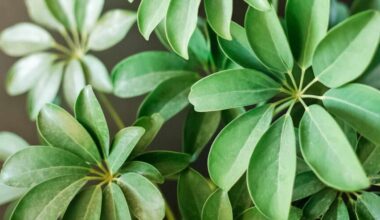Drainage of potted plants is necessary to ensure the needs of all green and flowering plants. Indeed, if the roots of your plant are permanently wet, they may die. This draining operation concerns plants placed in outdoor planters as well as those placed in indoor pots.
It is often the most important thing to consider when it comes to putting something at the bottom of your pot. We are also talking about the famous clay beads, water retention cups for certain plants, and raised bed covers.
Contents
Drainage system for planter
Why drain potted plants?
Except for a few plants with aquatic tendency like papyrus, the plants that we grow in planters do not tolerate a constant humidity nor a soggy substrate at the level of their roots.
A planter without a hole in the bottom, or a plant directly installed in a cachepot, and here comes trouble! Watering water cannot drain properly and the roots are constantly bathed in a sticky, asphyxiating mixture. Diseases often set in, the plant has brown, softened foliage and eventually dies.
How to install good drainage?
The first thing to consider is drilling the container if it is not already perforated at the bottom. Don’t be stingy with effort, and don’t hesitate to drill several holes if the planter is large in diameter. Three holes will generally be sufficient for a 15-inch diameter pot.
Once the holes have been drilled, it will be necessary to install a draining bed made of materials such as gravel, clay balls, old shards of previously disinfected planters or small pebbles.
Keep in mind this proportion: the volume of the drainage bed should always be equal to 20% of the total volume of the mixture.
Then simply cover with soil or the mixture adapted to your plant. Note well that each plant has needs which are clean to him thinks always to inquire about the nature of the substrate before repotting it.
Dishes and planters
Never leave water stagnant in a planter or cup. This is a common mistake and is the cause of many growing failures, especially when the plant is not placed on the bed of draining material in its pot. The roots are then in direct and permanent contact with the stagnant water and are suffocated by it.
Clay balls at bottom of planter
Why put clay beads?
Some soils are heavier than others. Clayey and compact soils retain water and prevent it from flowing properly. The water stagnates, leaving roots, seeds or bulbs to bathe in it. Most of the time they will rot and your plant will die!
Indeed, a small episode of drought is better tolerated by most plants, than exposure to stagnant water, which also brings its share of diseases and fungi. If they evacuate the water, the clay balls keep the humidity, beneficial for the plant which will come to draw it with its roots. Therefore, clay balls are placed so that the water can easily slide between them and be drained from the area where the roots are located.
How to put clay balls in a pot?
Although the potting soils are light and balanced, it is advisable to put clay balls at the bottom of the pot. Before doing so, make sure that the planter has a hole in the bottom. Sometimes the holes are the same size as the balls, which will clog them and make them ineffective. If your jar has almost no holes, you can arm yourself with a drill and add 2-3 different sizes. Then place the layer of beads before adding potting soil.
Tarp for planter
Why use a planter tarp?
- Cover the planter and form a mini greenhouse for cultivation.
- Protect and ventilate the bottom of the planter
- For large planters, create clean, weed-free “walkways” for cultivation.
Choosing a waterproof tarpaulin
Waterproofing is the main quality of a planter cover. Installed in the roof or roof of the window box, the cover must indeed protect the plants and plants inside. It is therefore essential to choose a 100% waterproof tarpaulin.
Opt for a greenhouse tarp
Select a greenhouse tarp for your planter. In addition to being waterproof, greenhouse covers are easy to handle because they are flexible, often weighing less than 250gr/m2. They are also rot-proof, which means that they do not rot in a humid environment.
Tips for the bottom of your pots
- Make sure that the bottom of the bins and planters you want to use have drainage holes. Excess water must be able to escape from the container. No holes? Drill them yourself.
- The material of the planters is not very important: terracotta, plastic, concrete, polystone, ceramic, synthetic resin, metal, wood, … As terracotta is porous, you will have to water the plants in these planters a little more often. With plastic, you will have to avoid that the bottom of the planter remains wet for too long.
- Before using them, soak new terracotta planters for a few hours in a bucket or basin filled with water. The terracotta will then gorge itself with water, it will no longer need the water contained in the clay.
- Pots that are narrower at the top – in the shape of urns – are not very suitable. The roots quickly take up all the space in the pot. It is then impossible to repot the plants without breaking the pot.
Summary
Do you want to prevent soil from escaping from your flowerpot indefinitely every time you water it? Or simply improve the living condition of your perennial? We explain how to take care of the bottom of your pots.









